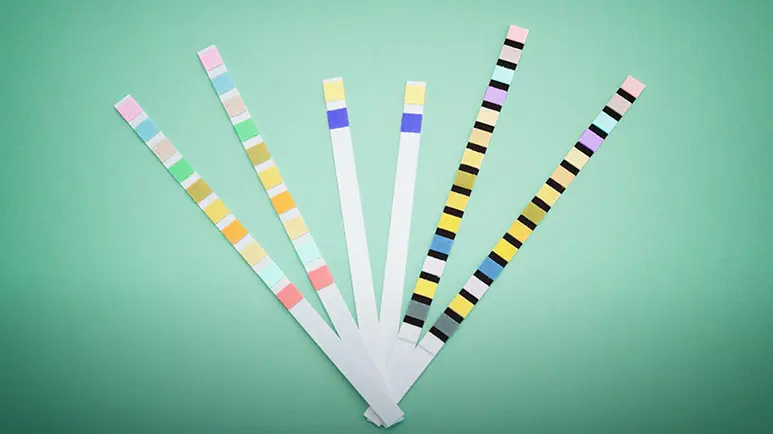Could Your Dog’s Next Bathroom Break Be Lifesaving?
Virginia Tech scientists introduce a rapid, noninvasive urine test capable of detecting cancer in dogs with astonishing accuracy. This easy method could soon become a routine check that offers peace of mind to pet owners everywhere.

STORY AT-A-GLANCE
- A noninvasive urine analysis developed by Virginia Tech researchers distinguished between dogs with and without cancer with 92.7% accuracy
- The scientists identified a unique pattern, or “spectral fingerprint,” for cancer in dogs’ urine, which led to the development of the urine test
- While the test is still in the research phase and only available in clinical trials, it may one day be able to not only detect cancer but also reveal recurrence of tumors and responses to therapy
- A urine test known as the CADET (CAncer DETection) BRAF Mutation Detection Assay is already available to detect bladder cancer in dogs months before clinical signs appear
- Access to noninvasive tests to diagnose cancer early can improve treatment outcomes and may be especially useful for breeds at high risk of cancer
A noninvasive urine analysis developed by Virginia Tech researchers may make early cancer detection in dogs easy, once it becomes widely available.1 Cancer is common in dogs, affecting 1 in 4 during their lifetimes. Among dogs aged 10 years and over, nearly half will develop cancer.
Access to noninvasive tests to diagnose cancer early can improve treatment outcomes and may be especially useful for breeds at high risk of cancer, such as golden retrievers, boxers, Scottish terriers and German shepherds.2
Urinalysis May Detect the Presence of Cancer in Dogs
While several blood tests are available to detect canine cancer, they may only be about 60% accurate and can be expensive. The Virginia Tech researchers developed an inexpensive urinalysis that has a 92.7% overall accuracy rate for detecting cancer.3 The researchers explained in Frontiers in Veterinary Science:4
“Urine is a continuously produced ‘liquid biopsy’ of the urinary tract, as well as the entire body. The production and composition of urine is meticulously regulated in health and can be significantly dysregulated in systemic and renal disease. Cancer and cancer treatment is known to dysregulate renal structure and function and affect urine composition. This has been recognized in humans for over a century and in dogs since the mid-1960s.”
The scientists developed the test using a technique called precision Raman spectroscopy to analyze urine quickly — in just about 15 seconds. This method works by shining a non-destructive laser on the urine, which causes the molecules within to vibrate in unique ways. The vibrations are then measured and turned into a visual chart called a spectral image.
The images are analyzed by computers and compare to images from healthy dogs and those with diseases, such as cancer, allowing for health issues to be detected based on the differences in these molecular vibrations.
Urine Test Detects Cancer With 92.7% Accuracy
For the study, researchers collected urine samples from three groups of dogs: 89 dogs without cancer, 100 dogs with cancer and 16 dogs with non-cancerous urinary or kidney diseases.
They used Raman spectroscopy to examine the urine and successfully identified a unique pattern, or "spectral fingerprint," for cancer in dogs’ urine. This led to the development of the urine test, which distinguished between dogs with and without cancer with 92.7% accuracy.5
Specifically, the test had a sensitivity of 94%, which is the ability to correctly identify cancer when it’s present, and a specificity of 90.5%, meaning its ability to correctly identify when cancer is not present. The findings were particularly effective in identifying a type of cancer called urothelial carcinoma.6
This new urine-based cancer screening is a significant development in diagnosing and managing cancer in dogs, offering a simple, noninvasive and rapid alternative to more invasive tests.
“If a new patient comes into the clinic and provides a urine sample, we can compare it against our database of urine scans to determine if the sample more closely matches a cancer fingerprint or a healthy fingerprint,” study author Ryan Senger said in a news release.7 “With the research that we have done so far, we were more than 90% accurate at being able to tell if a new sample had cancer fingerprint or a healthy fingerprint.”
While the test is still in the research phase and only available in clinical trials, it may one day be able to not only detect cancer but also reveal recurrence of tumors and responses to therapy. It could also make noninvasive cancer screening for dogs something pet guardians could do at home. Study author Nikolaos Dervisis explained:8
“Owners could go from paying for expensive testing every few months, to having a urine screening done once every few months, depending on the dog’s risk for cancer, if they wanted to. This screening would allow veterinarians to decide if further comprehensive testing is needed based on the results.”
A Urine Test Is Available to Test for Canine Bladder Cancer
A urine test has also been developed to detect bladder cancer in dogs, and this one is already on the market. There may be a genetic component in many cases, and researchers have found a mutation (V595E) in the canine BRAF gene in a large percentage of dogs with transitional cell carcinomas (TCC) — a common form of canine bladder cancer — and prostatic carcinoma (PC).
The urine test, known as the CADET (CAncer DETection) BRAF Mutation Detection Assay, can detect the mutation at very low levels, as few as 10 TCC or UC cells in the urine, making it useful for early detection, months before clinical signs appear.9
The CADET test became commercially available in July 2018. There’s also a Cadet BRAF-Plus test, which detects another biomarker, bringing the sensitivity to more than 95%.10
Because the test is noninvasive, it can be used not only as a diagnostic tool if symptoms are present but also as a screening tool for high-risk breeds. It can also be used to monitor treatment outcomes in dogs undergoing treatment for bladder cancer. Tests like these are groundbreaking because earlier detection can result in lives saved.11
Five Ways to Reduce Your Dog’s Cancer Risk
If you want to minimize your pet's risk of cancer, consider working with an integrative or holistic veterinarian, or a veterinary oncologist who specializes in integrative care. These professionals can advise you on maintaining a healthy lifestyle for your pet through targeted nutrition and supplements.
It's also crucial to schedule regular wellness check-ups. These visits should include cancer screenings at least once a year. For older dogs, consider screenings every six months to ensure their health and well-being. Embracing the following five steps throughout your pet’s life can also help keep him healthy and disease-free:
- Maintain a healthy weight
- Feed a minimally processed, anti-inflammatory diet, avoiding highly processed pet foods with large quantities of starch (grains, legumes, corn, etc.)
- Reduce exposure to toxins, such as household pesticides, chemical lawn treatments and chemical flea and tick preventives
- Wait to spay or neuter your pet until the age of 18 months to 2 years, especially for large or giant breeds; better yet, sterilize your pet without desexing
- Refuse unnecessary vaccinations and ask your vet to check vaccine antibody titers before automatically giving more vaccines










